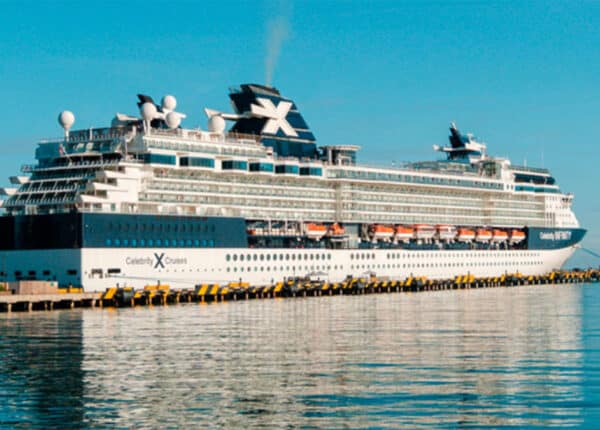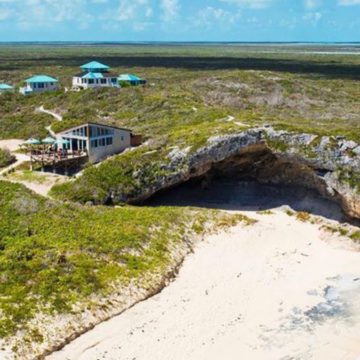By Erik Neff
Op-Ed Contributor
IT HAS BEEN NO SECRET that China has taken a strategic economic interest in the Caribbean region. China’s intention to expand its financial influence has been crystal clear — it is seeking new political alliances and new markets.
Through grants, loans and large-scale investments, China seems to be out to earn political favor and influence. China has made generous gifts to several Caribbean states, including sports complexes, convention centers, schools, hospitals and roads, and given hundreds of millions in loans and other forms of economic assistance.
As a gesture of continuing friendship and solidarity to the Caribbean people, China in 2011 announced that it would be granting loans worth of US $6.3 billion in the region.
However, let us not forget Taiwan or the US in this discussion.
Taiwan is formally recognized by 22 states in the UN as the People’s Republic of China. Eleven of these countries are within the Greater Caribbean/Latin America region, and five of them are Caribbean.
From this regard, the Chinese largesse towards Caribbean states appears to initially have been directed towards securing the one China policy. This programme has been effective. Some observers believed the Bahamas received its gifted stadium from China as a present for cutting off diplomatic ties from Taiwan in 1997. More recently, generous grant programs, over US $100 million, enticed the Dominican government to break its long-held diplomatic relationship with Taiwan in 2004.
Certainly, China’s objective is not to simply buy UN votes. While the US is busy with the Middle East and its war on terror, China is investing its resources in the Caribbean people that are “mutually beneficial.”
China’s economic diplomacy in Caribbean is working and, if left unchallenged, China will soon become the major player influencing regional alliances, security, and trade, as well as economic and cultural development.
With an already substantial presence in the Caribbean, Chinese companies await to harvest the fruits of their national investment.
During the past 10 years the Caribbean/China trade volume has seen a massive increase, and further expansion is expected. The strenuous history of US relations with some of the Caribbean countries and current neglect may very well have been a catalyst for the emergence of China’s brand of economic diplomacy in the region.
Although, the creation of a Chinese economic “beachhead” poses political, economic, and security concerns for the US and Caribbean region, the American response to the Chinese diplomatic maneuvering is at least ambiguous.
It has always been within the US’ best interest to foster stronger bonds with its Caribbean neighbors. US foreign aid in the region increased during the George W Bush administration; however, since the 2010 earthquake in Haiti, it has been steadily declined.
This downward trajectory is reflected in President Obama’s FY2013 budget request for foreign aid to Latin America and the Caribbean administered by the State Department and USAID.
The requested US $1.7 billion is significant less than in the two previous fiscal years, and 55 percent of it is directed to Mexico, Haiti, and Colombia.
Specifically, the requested assistance for the Caribbean region totals US $ 492 millions with Haiti accounting more than two-thirds (CRS report for Congress, June 26, 2012).
Even considering additional aid by the Department of Defense and other agencies, the current direct spending and lending strategy of US in the Caribbean does not seem to meet the breadth of China’s.
Despite this, USAID plans to significantly reducing its footprint in the region by 2030 citing “favorable developmental trends” (Testimony of assistant administrator for Latin America and the Caribbean, before the House Appropriations Subcommittee on State and Foreign Operations, March 29, 2012). One cannot but notice the coincidence of the US to China revolving door strategy.
In the near future, the Caribbean will find new avenues of wealth not only from direct and indirect state sponsored investments and gifts, but from externalities of other developments in the Southern Hemisphere.
The expansion of the Panama Canal brings the future promise of more vessel traffic, cargo and trade. The Caribbean region being in the crossroads of transatlantic, north-south and far east-west shipment routes has the potential to grow to a busy and lucrative transshipment hub. With the prospect of increased Chinese shipment to west through the Panama Canal (currently only 20 percent), it is another reason as to why China is flirting the region.
It is in America’s interest to support the development of maritime security and infrastructure in the region. Interconnected with that is the fact that the Caribbean countries are the third largest importer of US goods in Latin America. Although US trade policy in the region relies on unilateral trade arrangements, the effect of which has been questionable (CRS Report for Congress, June 2010), the US must review its policy objectives, and expand and renew trade agreements with the Caribbean counties. Resumption of talks for a US/Caribbean free trade agreement could mediate differences and reluctances, and the Caribbean people should strongly consider it.
This is especially important as the cost of living increases in China, which will reduce the profitability of its manufacturing sectors.
The projected increases in global shipping and influx of trade and money will undoubtedly exaggerate the crime problem of the region, with enormous ramifications for the security and stability of the region and the US at large.
In light of these developments, the US Coast Guard easily could fill a regional need in the Caribbean by expanding its operations through infrastructure development, new diplomatic agreements and understandings, and jurisdiction expansion by appropriately reforming and expanding Shiprider and other jurisdictional agreements.
A strong US Coast Guard presence along its “third border” cannot be overlooked by the US, and it should also be promoted and lobbied for by the Caribbean community.
As Congressman Rick Larsen adroitly stated, “a strong economy needs a safe and secure maritime environment.”
Chinese economic beachhead or not, the US must cooperate with and aid its neighbors to maintain regional prosperity, peace, and security based on the mutual respect of sovereign rights.
Erik Neff is a JD and LLM graduate in Ocean and Coastal Law from the University of Miami School of Law. He writes frequently on Caribbean affairs.
Note: the opinions expressed in Caribbean Journal Op-Eds are those of the author and do not necessarily reflect the views of the Caribbean Journal.







